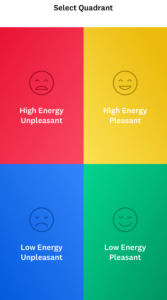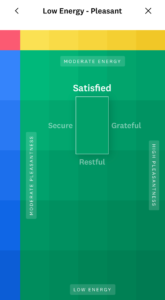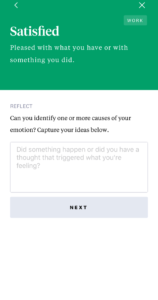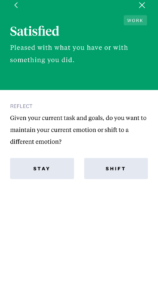
Discussing practical steps families can take now to up their emotional learning game and set themselves on a path to positive relationships, goal setting, and making responsible decisions.
Emotions are running high and there’s no place to go. No, it’s not a horror movie, but it may feel like one. I can remember days in the classroom where it was the perfect mix of drama—emotions running high in every group. One student is crying, the other is peeved about something, another is off the chart excited and wants to tell everyone about it, etc. I had to somehow wrangle everyone in and get to the bottom of why half the class was having an emotional meltdown when we were supposed to be analyzing an essay. And then the bell rings and they all head out.
Not so these days. If you’re a parent during this pandemic, your kids aren’t going anywhere. All those emotions—their emotions, your emotions—get to collide throughout the day . . . and night.
But right now, during this pause, you have a necessary opportunity to bring social emotional learning into your home. Instead of retreating to other rooms (if that’s even possible), now might be just the time to actually sit down and really seriously ask, “How are you feeling?” And actually expect an answer.
But where do you start? In his book Permission to Feel, Marc Bracket explains his RULER process. I gave a more in-depth explanation of each step in my previous blog, but here is the acronym:
- Recognize
- Understand
- Label
- Express
- Regulate
Name Your Emotions With the Mood Meter App
If you’re interested in getting better at these first few steps, I would recommend the low-cost Mood Meter app that’s used in the book. It essentially allows you and your children to track how you feel. You pick your quadrant and word on the quadrant and then explain why you think you feel that way. Then you decide if want to stay or shift. If you want to shift, it gives you a reflection to think about.
Here’s how it works to help you better track and understand your emotions.
First you choose your quadrant.
Then you choose a word in that quadrant that best matches your mood.
Then you explain why you think you feel that way.
You decide if you want to “stay” or “shift.”
If you want to shift, you are given a reflection to help you in that shift.
This is one way to help broaden your and your children’s emotional vocabulary and understanding. Can you imagine all the words we could learn instead of fine?
But what if your children aren’t ready to talk about their feelings? How can you get them started at least talking about emotions?
Emotional Learning Story Time
If you read a book together, there is an opportunity to ask about that character’s feelings. How do they feel? Why do you think they feel that way? How would you feel if you were in that situation? Why? You could also discuss your thinking about the character’s feelings. Side note: This is one reason I loved teaching English. Unlike other subjects, there were so many opportunities to weave in elements of social emotional learning!
You could ask them questions about the books they are reading on their own, too.
Okay, so now you’re talking about others’ emotions. What about expressing their own?
Journaling About Emotions
Journals are a powerful way to express how we feel. Writing our emotions down can be just as powerful as saying them out loud. Your children could write about anything, but you could have them specifically do a mood journal where they write about what they feel and why.
Mood Vocabulary
You can even integrate social emotional learning into vocabulary practice. This time, though, they are practicing using emotional words. If you get the Mood Meter app, you’ll find all of the words as you float your finder over the quadrants. Just imagine—instead of fine, you get words like fatigued, calm, thoughtful, optimistic, pleased, ecstatic, frustrated, and tense.
Regulating Emotions
The ultimate goal is that we help everyone in the family better regulate their emotions. This is the spot in the book that I wished I had when I was in the classroom. You’ll probably recognize the strategies because you use some of them already. Now you’ll have the explicit language to help your kids use them, too.
- Mindful Breathing—Taking a couple minutes to pause and just breathe. You could practice this with your kids or add to a family yoga routine.
- Forward-Looking—This means we have to know what triggers our emotions. For example, if your daughter always gets angry because your son takes long showers and uses all the hot water, she could make sure she takes her shower early, so she does not have to do deal with the situation.
- Attention-Shifting—Food, exercise, Netflix, procrastination. This might not be the best long-term strategy, but they are still strategies. We can also add “self-talk” to the list. This can also move our attention, in a more positive way, from a stressful situation.
- Cognitive Reframing—This where you seek an alternate way of seeing things. Instead of thinking your son is rude because he doesn’t like being with you all day, think that he is also tired and stressed and doesn’t mean to take it out on you.
- Meta-Moment—Here are the steps to this strategy:
- Notice your trigger (or the button your daughter just pushed!)
- Pause for a moment
- Visualize your best self
- Strategize and act
Now that you’re feeling more comfortable talking about feelings, how can you keep this going past the pandemic?
Create a Family Charter to Support Emotional Learning
Brackett suggests creating a family charter where you create a group commitment based on the following questions:
- How do we want to feel as a family?
- What can we do to experience those feelings as often as possible?
- What can we do when we are not living the charter?
We may need these lessons more than ever, but we also need to remember we still need these skills once the pandemic is over. This just might be the right time to get it all started. So . . . how do you feel?
About the Author
Kristen Henry is an independent education consultant at KH Literacy Education. Based on her experience as a literacy educational leader, she guides teachers to use research-based practices, be more confident in the classroom, and change students’ lives. Her book, Guiding Questions, helps instructional coaches, administrators, and teachers learn to have more productive conversations about improving their teaching practice.
Read, Listen, and Play About Social Emotional Learning
- Unlocking Us with Brené Brown
- Permission to Feel, Marc Brackett (2019)
- Mood Meter app
- “No, Really, How Do You Feel? Helping Children and Teens Understand and Regulate Their Emotions,” Kristen Henry, San Antonio Charter Moms, June 3, 2020
- “Big Goals, Relevant Work, and Flexibility: How to Make At-Home Learning Work for You,” Kristen Henry, San Antonio Charter Moms, April 15, 2020
- “Self Care While Staying at Home,” Lora Idol, San Antonio Charter Moms, April 6, 2020
- “Keep Calm and Parent On: Advice for Accidental Homeschoolers,” Caitlyn Baker and Shannon Ruddell, San Antonio Charter Moms, April 3, 2020
- “Resources for Staying Active With Kids While Social Distancing,” Amy Johnson, San Antonio Charter Moms, March 19, 2020
- “Learning Social And Emotional Skills Can Improve Student Academic, Behavioral Outcomes,” Texas Public Radio, January 12, 2020
- “CASEL President on the Importance of Maintaining Quality in Social-Emotional Learning, Paying Attention to the Adults and Work as the Next SEL Frontier,” Bekah McNeel, 74 Million, December 9, 2019





